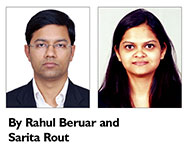 The compulsory licensing regime in India has always been embroiled in controversy, more so when it involves compulsory licensing of pharmaceutical patents, the latest being a statement US-India Business Council (USIBC) made in its report issued in response to the Federal Register Notice (81 F.R. 10513):“Despite compulsory licensing denials, Industry continues to be concerned by the potential threat of compulsory licensing. The government of India has privately reassured [that] it would not use Compulsory Licences for commercial purposes. USIBC would be further encouraged if the government of India made a public commitment to forego using compulsory licensing for commercial purposes and in public emergencies only, which would greatly enhance legal certainty for innovative industries.” Under the Indian patent regime, a compulsory licence is granted to a third party (read: generic drug manufacturer), to produce and market a patented invention without the consent of the patent holder. A compulsory licence can be granted only upon expiration of three years of grant of a patent upon satisfaction of any of the following grounds: The TRIPS compliant compulsory licensing regime in India is a very significant provision in making life-saving drugs easily accessible and available at an affordable price to patients. The first Indian compulsory licence was granted in March 2012 to NATCO for Bayer AG’s anti-cancer drug ‘Nexavar’ (sorafenib tosylate) as NATCO proposed to make the generic version of the drug available in India for Rs. 8,800 as against the patentee BAYER AG’s price of Rs. 2,84,000. While the above set out a precedent for many more compulsory licences to be granted in future, the threshold for granting a compulsory licence remains in satisfying the above parameters. Most of the applications for compulsory licences filed so far could not satisfy the conditions for compulsory licence and were rejected on merits, thereby demonstrating the robustness of Indian Patent Regime and the compulsory licensing mechanism thereunder. The USIBC, however, judged this as a trend of non–issuance of compulsory licences and observed that the rejection of compulsory licences so far provide investor certainty and predictability that their patents will be upheld in India. Such observations may hold true and genuine when looked at from the perspective of development, innovation and investments. However, the very statements undermine the judicial process of issuing compulsory licence in India (as seen in the NATCO case) which follows the due process under the Indian law and TRIPS. Also, it would not be out of context to note that the United States was one of the first countries to issue compulsory licence for a patented drug. Furthermore, TRIPS itself affords several flexibilities for contracting parties to mould their domestic laws to accommodate national priorities and unambiguously provides for compulsory licensing, with just restrictions. In this scenario, the statements and observations made by the USIBC have led to a furore and alarm amongst stake holders. The Ministry of Finance subsequently issued a press release on March 22, clarifying that such reportings are factually incorrect and stated that the government is “conscious of the need to spur innovation and protect individual rights and retains the sovereign right to utilise the flexibilities provided in the international IPR regime”. Interestingly, the National Human Rights Commission, India (NHRC) has intervened taking a suo moto action and also issued a press release dated April 1, 2016 directing the Union Ministries of Commerce & Industries & Health to submit reports in the matter. The NHRC expressed its concerns over the right to health and right of the people to access generic medicines at affordable prices in the wake of rumours of greater restraint approach being exercised in handing out compulsory licences in India to produce cheaper versions of drugs patented with the American firms. Needless to say, it is crucial to examine each application of compulsory licensing and grant the same while being mindful of striking a balance between the right to health and affordable medicine as well as boost innovation and investment in the country. ––––––––––––– |
Compulsory licensing of patents in India: a human rights issue as well!
15
previous post

